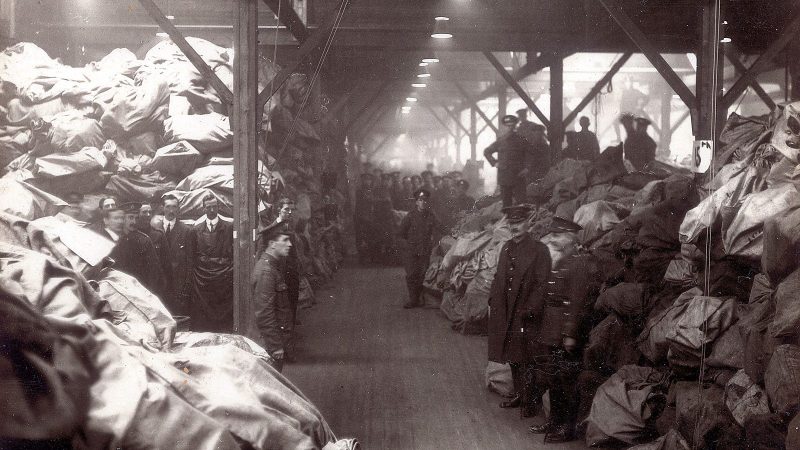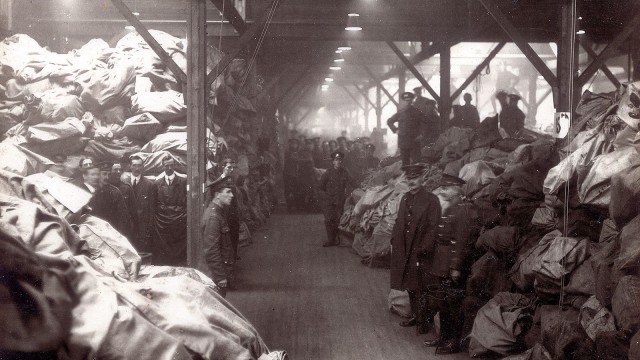In 1915, a soldier fighting on the Western Front wrote to a London newspaper requesting some mail, since he felt quite lonely. He did not have to wait long. A few weeks later, after the newspaper published information stating his name and regiment, he received 3,000 letters, 98 parcels and three bags full of other smaller parcels and packages.
Whether he replied to each one of them or not, it would be impossible to know, however, if he did take the time to answer the mail, his letters would have reached Britain within a day or two after posting them.
Delivering mail during wartime was considered just as important as providing the front line with rations and ammunition. The GPO was already a giant challenging operation even before the start of the First World War in 1914. It was run by more than 250,000 people and it was making over £ 32 million, this way becoming the biggest economic enterprise in Britain. When the war broke out in 1914, they had to deal with a new wave of about 12 million letters and another million of parcels, which were being delivered to soldiers every single week.
Ex-postman and former Home Secretary Alan Johnson says things haven’t changed much since he first started working as a postman, aged 15, at a time when First World War soldiers were just reaching their retirement age and the men who fought in the Second World War were still in their 40s, the BBC News reports.
Mr Johnson insisted his job and any postman’s job was not actually a job, but a service, their holidays were not holidays but annual leave and none of them went to work, they went on duty. The General Post Office found pride in the fact that millions and millions of letters, parcels and packages could simply be moved from anywhere and to anywhere, ‘safely and quickly.’
Members of the Royal Engineers (Postal Section) or REPS formed a special part-time unit, made up of GPO employees, who also had some basic military training. This unit was immediately sent to war went it broke out in 1914. Shortly after the start of the First World War, this special unit created the Home Depot – a huge wooden hut, where about 2,500 women were assigned with the task of sorting out the post.
During the first months of the war, every letter was opened and read by a junior officer and opened and read again at the Home Depot.

